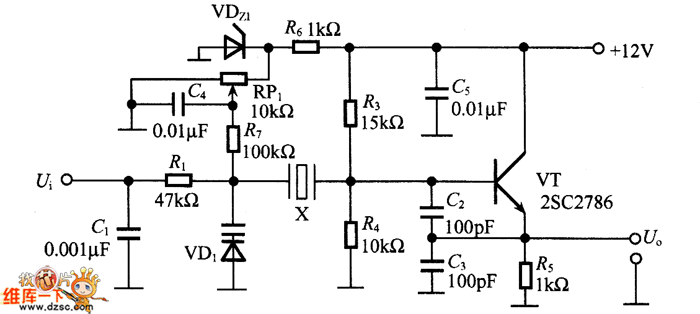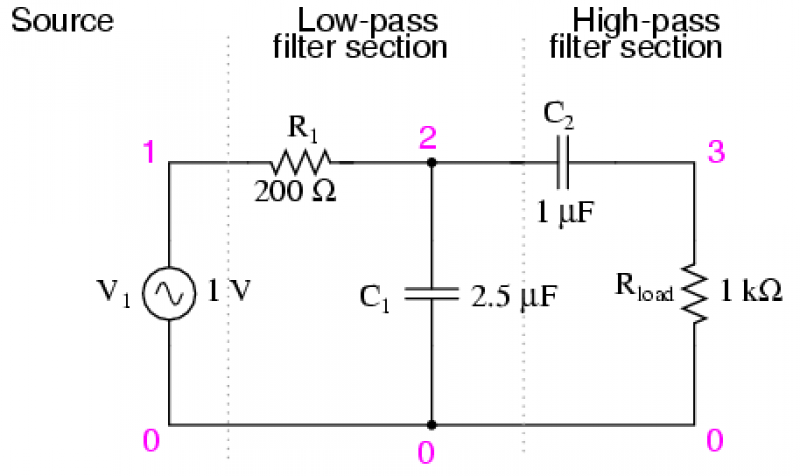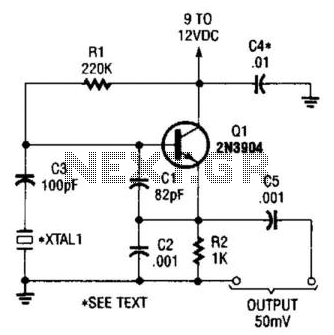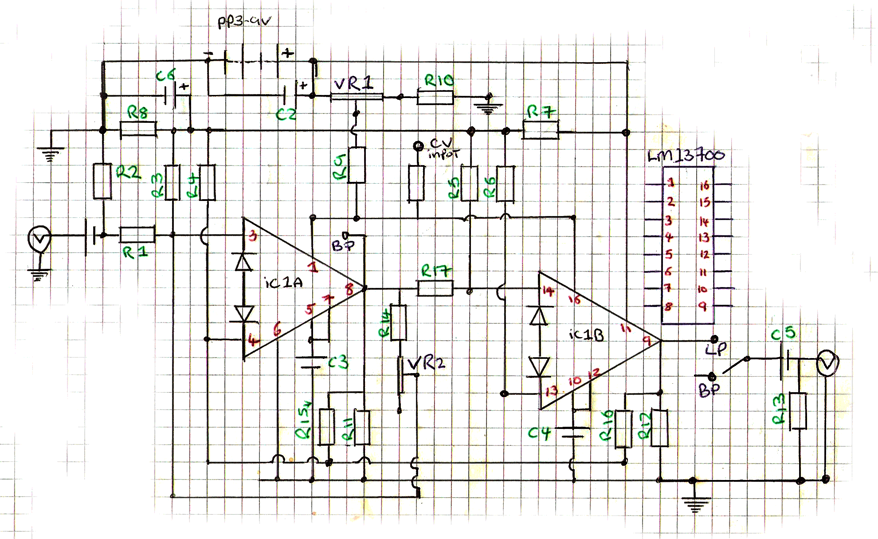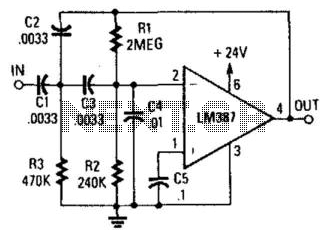
Crystal Filter

In the view of the dramatic drop in the price of crystals used in color TV sets, they now represent an economical way of building an SSB filter. The circuit shown in the diagram is for a filter with a 6 dB bandwidth of roughly 2.2 kHz. By terminating the input and output with a 1 kΩ resistor in parallel with an 18 pF trimming capacitor, passband ripple can be tuned down to 2 dB. All crystals used in the circuit are 4.433 MHz. Collect all the six crystals from the same manufacturer with the same serial number.
The described circuit utilizes six identical crystals operating at a frequency of 4.433 MHz, which is a common frequency for SSB (Single Sideband) modulation applications. The choice of using crystals from the same manufacturer and with the same serial number ensures that their frequency characteristics are closely matched, minimizing phase discrepancies that could lead to performance degradation in the filter's response.
The filter is designed to have a 6 dB bandwidth of approximately 2.2 kHz, which is suitable for SSB applications where bandwidth efficiency is crucial. The bandwidth can be adjusted by changing the values of the terminating resistors and the trimming capacitor. In this case, a 1 kΩ resistor is used in parallel with an 18 pF capacitor at both the input and output. This configuration allows for fine-tuning of the filter's response, ensuring that the passband ripple is minimized to 2 dB, which is an acceptable level for high-fidelity audio applications.
The circuit layout should ensure that the crystals are arranged in a manner that optimizes their coupling and minimizes parasitic capacitances and inductances. The use of a PCB (Printed Circuit Board) can help achieve this by providing a controlled environment for the components and reducing the impact of external interference.
In summary, the implementation of this SSB filter circuit leverages the economic advantages of low-cost crystals while maintaining performance through careful component selection and arrangement. The resulting filter is capable of providing high-quality signal processing suitable for various communication applications.n the view of the dramatic drop in the price of crystals used in color TV sets, they now represent an economical way of building an SSB filter. The circuit shown in the diagram is for a filter with a 6 DB band width of roughly 2.2 KHz. By terminating the input and output with a 1 K Ohms resistor in parallel with an 18 pf trimming capacitor, passband ripple can be tuned down to 2 DB.
All crystals used in the circuit are 4.433 MHz. Collect all the six crystals from same manufacture with same serial number. 🔗 External reference
The described circuit utilizes six identical crystals operating at a frequency of 4.433 MHz, which is a common frequency for SSB (Single Sideband) modulation applications. The choice of using crystals from the same manufacturer and with the same serial number ensures that their frequency characteristics are closely matched, minimizing phase discrepancies that could lead to performance degradation in the filter's response.
The filter is designed to have a 6 dB bandwidth of approximately 2.2 kHz, which is suitable for SSB applications where bandwidth efficiency is crucial. The bandwidth can be adjusted by changing the values of the terminating resistors and the trimming capacitor. In this case, a 1 kΩ resistor is used in parallel with an 18 pF capacitor at both the input and output. This configuration allows for fine-tuning of the filter's response, ensuring that the passband ripple is minimized to 2 dB, which is an acceptable level for high-fidelity audio applications.
The circuit layout should ensure that the crystals are arranged in a manner that optimizes their coupling and minimizes parasitic capacitances and inductances. The use of a PCB (Printed Circuit Board) can help achieve this by providing a controlled environment for the components and reducing the impact of external interference.
In summary, the implementation of this SSB filter circuit leverages the economic advantages of low-cost crystals while maintaining performance through careful component selection and arrangement. The resulting filter is capable of providing high-quality signal processing suitable for various communication applications.n the view of the dramatic drop in the price of crystals used in color TV sets, they now represent an economical way of building an SSB filter. The circuit shown in the diagram is for a filter with a 6 DB band width of roughly 2.2 KHz. By terminating the input and output with a 1 K Ohms resistor in parallel with an 18 pf trimming capacitor, passband ripple can be tuned down to 2 DB.
All crystals used in the circuit are 4.433 MHz. Collect all the six crystals from same manufacture with same serial number. 🔗 External reference
